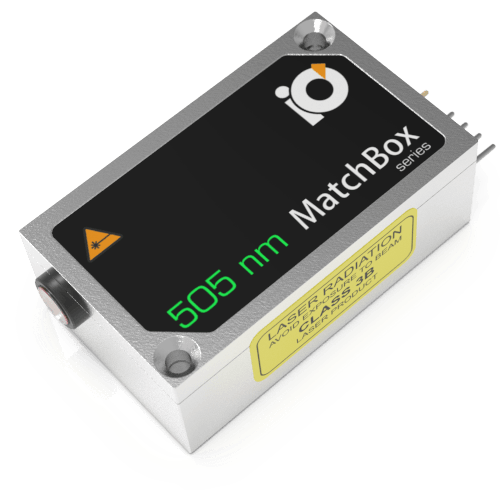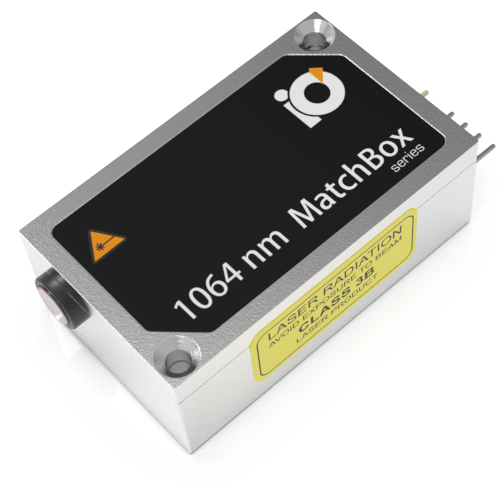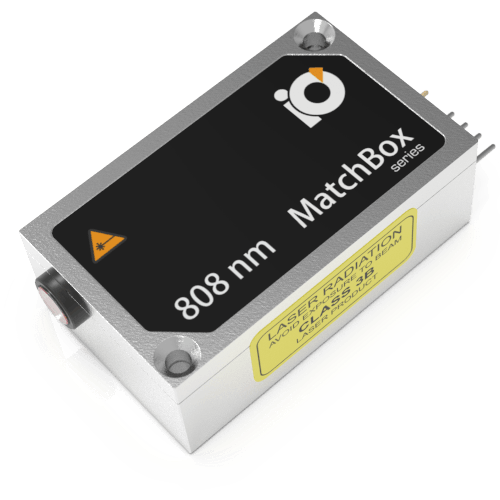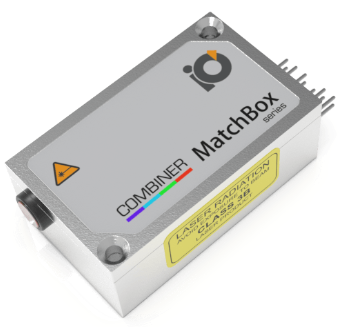505L-1XA
Laser Diode Module, Single Mode, 505nm
Key Features:
- 505nm
- Multiple Fiber Coupled Options
- Ultra-compact All-in-one Design
- Thermally stabilized optics
- Monolithic Design
- Hermetically Sealed
- Automatic Power Control
- 5VDC Input Voltage
There are many configurations and options available. If you do not see exactly what you need below, please contact us!
Need Quantities? Have a question?
POPULAR CONFIGURATIONS:
Picture |
Part Number |
Part Description |
Datasheet |
Price |
Lead Time |
Quantity |
|
|---|---|---|---|---|---|---|---|
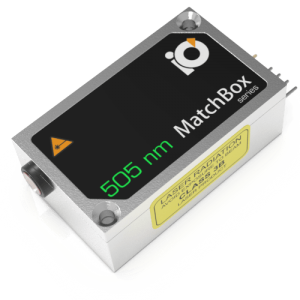
|
0505L-11A-NI-NT-NF |
Laser Diode Module, 505nm, 60mW, Free Space |
|
$2,381.47 |
Inquire |
Get Quote | |
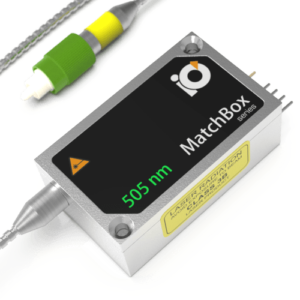
|
0505L-13A-NI-AT-NF |
Laser Diode Module, 505nm, 30mW, Single Mode fiber w/ FC/APC connector |
|
$2,757.49 |
Inquire |
Get Quote | |

|
0505L-13A-NI-PT-NF |
Laser Diode Module, 505nm, 30mW, Single Mode fiber w/ FC/PC connector |
|
$2,757.49 |
Inquire |
Get Quote | |

|
0505L-13A-NI-ST-NF |
Laser Diode Module, 505nm, 30mW, Single Mode fiber w/ SMA connector |
|
$2,757.49 |
Inquire |
Get Quote | |

|
0505L-15A-NI-AT-NF |
Laser Diode Module, 505nm, 30mW, Polarization maintaining fiber w/ FC/APC connector |
|
$3,133.51 |
Inquire |
Get Quote | |

|
0505L-15A-NI-PT-NF |
Laser Diode Module, 505nm, 30mW, Polarization maintaining fiber w/ FC/PC connector |
|
$3,133.51 |
Inquire |
Get Quote | |

|
0505L-15A-NI-ST-NF |
Laser Diode Module, 505nm, 30mW, Polarization maintaining fiber w/ SMA connector |
|
$3,133.51 |
Inquire |
Get Quote |
The Matchbox series offers excellent performance and reliability in the “World’s Smallest” ultra-compact, all-in-one, integrated laser head. They can operate on a 5V power supply while maintaining low noise operation. The monolithic design of the Matchbox Series laser includes thermally stabilized optics in a hermetically sealed housing, ensuring reliable and maintenance-free operation. This series is available in wavelengths from 405 nm thru 1064nm, with options for collimated beam or fiber-coupled output, and single-mode and multimode versions.
Benefits:
- Cost-effective with smart power electronics:
- We prioritize the balance between price and performance by installing smart power electronics, ensuring our products deliver the best value for your investment.
- Customizable and high-performance in a compact package:
- Our laser products can be configured to meet your specific needs and deliver exceptional performance in a miniature size, allowing for seamless integration into your system.
- Excellent beam quality and accuracy:
- High quality beam properties and high pointing stability are crucial for applications requiring accurate and consistent laser performance
- Beam delivery options:
- From free-space to fiber-coupled to SMA port, get the beam output that fits with your application and setup.
- Ultra-Compact – Ideal for integration:
- Our laser products are designed for easy integration into your system, saving you time and money on installation. The ultra-compact design is perfect for lightweight, portable, handheld devices .
- Dedicated break-out-box for easy setup:
- Our dedicated break-out-box provides PD-type power supply support, fan control, interlock, and inputs for modulation, making it easy to set up and use our products.
- Maintenance-free operation:
- Our hermetically sealed housing with stabilized optics ensures maintenance-free operation, providing peace of mind and reducing downtime for your system .
- Quality assurance and compliance:
- All of our products come with a 12-month warranty and are RoHS compliant, ensuring that you receive high-quality, reliable products.
Designed for OEM integrators and adored by scientists, these modules offer excellent beam quality and accuracy, user-friendly software with multiple parameter monitoring, low power consumption, high cooling capacity, rugged housing, and more. These lasers pair perfectly with the Matchbox Multi-Wavelength Beam Combiners, which are configurable, turnkey devices allowing two to four laser diode drivers. All of these features make them the ideal laser source for integration into commercial flow cytometers and for other Life Science applications.
If you have any questions or need more information, please contact us.
The MatchBox combiner offers up to four different wavelengths in a single housing if multiple wavelengths are needed. The following link will lead to the MatchBox Combiner Page for more information on the wavelength combiner options.
| Wavelength (nm) | |
|---|---|
| Output power (W) | |
| Mode | |
| Output |

 SHIPS TODAY
SHIPS TODAY 